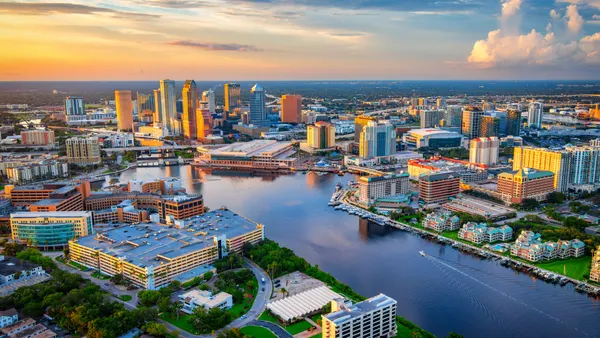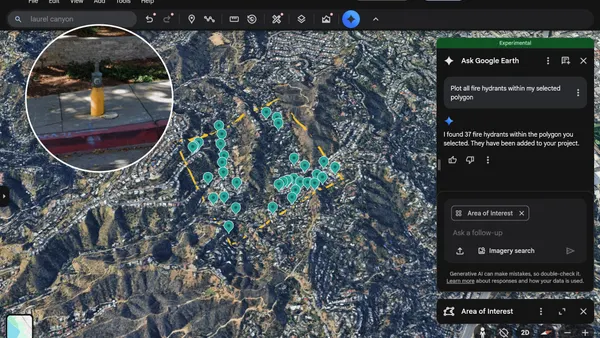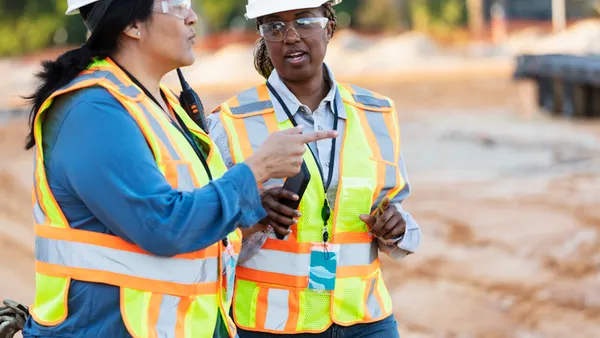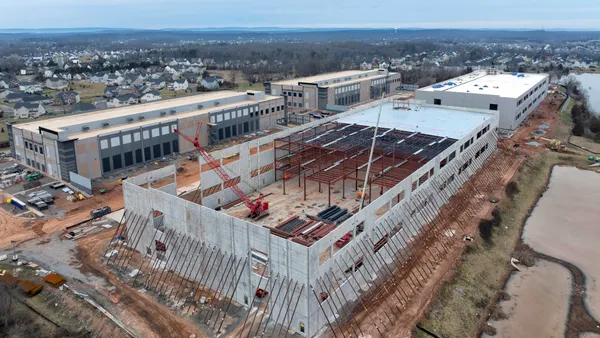Dive Brief:
-
A British soccer club has selected an all-wood design from Zaha Hadid Architects for its planned 5,000-seat stadium, Dezeen reported.
-
The Forest Green Rovers venue will feature a rippled wood bowl with unobstructed visibility of the field from every seat. The low carbon emissions resulting from the ample use of wood, along with sustainable power sources, will make the facility the greenest soccer stadium in the world, according to team officials.
- The team chose the firm's plan from more than 50 other submissions in a global competition. Dezeen reported that designs by the late architect Zaha Hadid for the 2012 London Olympics Aquatics Centre and the 2022 FIFA World Cup arena in Qatar, in the United Arab Emirates, gave the firm a winning edge.
Dive Insight:
Hadid, who was known for her cutting-edge and sometimes controversial structures, died last year, but her namesake firm has continued operations.
The stadium will be the center of the 100-acre Eco Park, which developer and green-energy company Ecotricity said will include sports and business facilities, as well as a nature reserve, a transportation hub and a canal restoration project.
Ironically, Hadid's plan for a Tokyo 2020 Olympics stadium was scuttled in favor of a more subtle wood design from Japanese architect Kengo Kuma. Hadid's proposed stadium was deemed too lavish and, ultimately, costly, by the public, and Japanese officials said they opted for Kuma's design in part because it better reflected the local aesthetic, according to Dezeen.
While soccer has yet to rise to the level of popularity in the U.S. seen in the rest of the world, team owners and cities are investing more into Major League Soccer stadium development.
In August, construction crews broke ground on the $250 million future home of the Los Angeles Football Club, the 22-000-seat Banc of California stadium. Construction of the Gensler-designed facility, which boasts several celebrity owners, is entirely privately financed and is expected to provide a $1 billion economic boon for the area. The project could qualify for some local government assistance on necessary infrastructure improvements, its owners said.
After design disagreements with Washington, DC, and local landowners, the forthcoming $300 million D.C. United stadium is a go. The stadium borders a business district, and neighboring businesses came out in opposition to a design they said did not include enough ground-level retail and would not encourage visitors to venture beyond the stadium. In October, the team and area landowners came to an agreement on the look of the venue, and it is expected to pass at the next D.C. Zoning Commission meeting.










